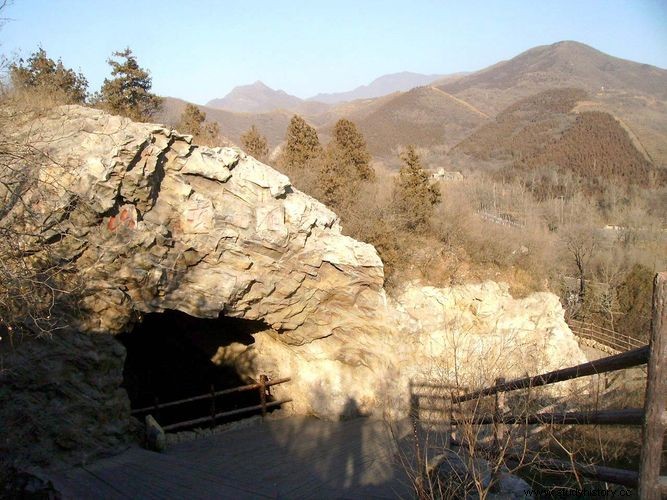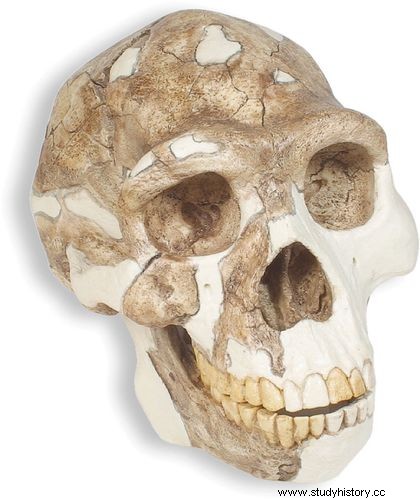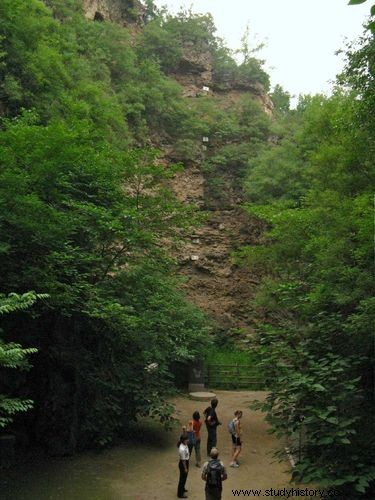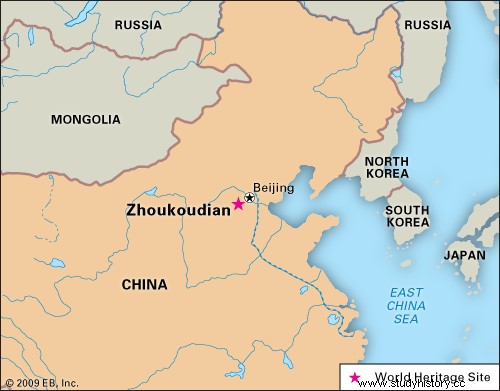Zhoukoudian , Wade-Giles Chou-k'ou-tien , archaeological site near Zhoukoudian Village, Beijing Municipality, China , 42 km southwest of downtown. The site, which includes approximately four settlements, has yielded the largest known collection of extinct hominin fossils Homo erectus - about 40 incomplete skeletons in total, commonly known as the Beijing man Fossils. Remains of anatomically modern humans ( H. sapiens ). The discoveries at Zhoukoudian have proven crucial to advancing the study of human evolution .
 Britannica Quiz Exploring China:Fact or Fiction? Does China have about half the world's population? Is China the most densely populated country on earth? Test the density or sparsity of your knowledge of China with this quiz.
Britannica Quiz Exploring China:Fact or Fiction? Does China have about half the world's population? Is China the most densely populated country on earth? Test the density or sparsity of your knowledge of China with this quiz. The hominin remains were found in a series of boulder- and loess-filled crevasses (incorrectly called "caves") in a Limestone cliff found . 1921 Swedish geologist and fossil hunter J. Gunnar Andersson was fascinated by stories about "dragon bones" that the locals found in the crevasses and used for medicinal purposes. Andersson explored the fissures and discovered some pieces of quartz that could have been used as early cutting tools. This discovery borrowed Believe his theory , that the bones were actually human fossils. 1927 Canadian anthropologist Davidson Black grabbed a hominin molar. Based on this finding, he identified a previously unknown hominin group, which he Sinanthropus pekinensis (ie Beijing man) named. Major excavations began in 1929.

In the years that followed, archaeologists uncovered complete skulls, mandibles, teeth, leg bones, and other fossils of men and women of different ages. The samples were eventually saved as H. erectus classified . Many of the fossiliferous strata have been dated, and the results suggest that the site was first occupied and then maybe 230,000 years ago from H. erectus at times was used. If these dates are correct, Zhoukoudian documents the relatively late survival of this species.

Further discoveries at the site indicated that the Peking man was quite technologically advanced. Stone scrapers and choppers, as well as several hand axes, showed that the Pekingese developed different tools for different tasks. Excavators also claimed to have uncovered ash deposits from charred animal bones and rocks, indicating the Beijing native had learned to light fire and to use cooking and heating. This discovery led to a drastic revision of the date for the earliest human mastery of fire. However, a re-analysis of the site in 1998 found no evidence of hearth, ash or charcoal and showed that some of the "ash layers" were actually water-bearing sediments collected from the surrounding hills washed into the sites. The bones and stones were not charred by human activity but by lightning-induced fire.
During WWII the more notable fossils were lost when attempts were made to smuggle them out of China for safekeeping. They were never recovered. After the war, excavations resumed and many more fragments of H. erectus detected. However, some areas remain unexcavated. In 1987, Zhoukoudian was added to the list of UNESCO set World Heritage Site see In 1995, concerns about the deterioration of the crevasses, parts of which were in danger of collapsing, led to the establishment of a joint UNESCO-China project aimed at preserving and investigating the site to initiate.


